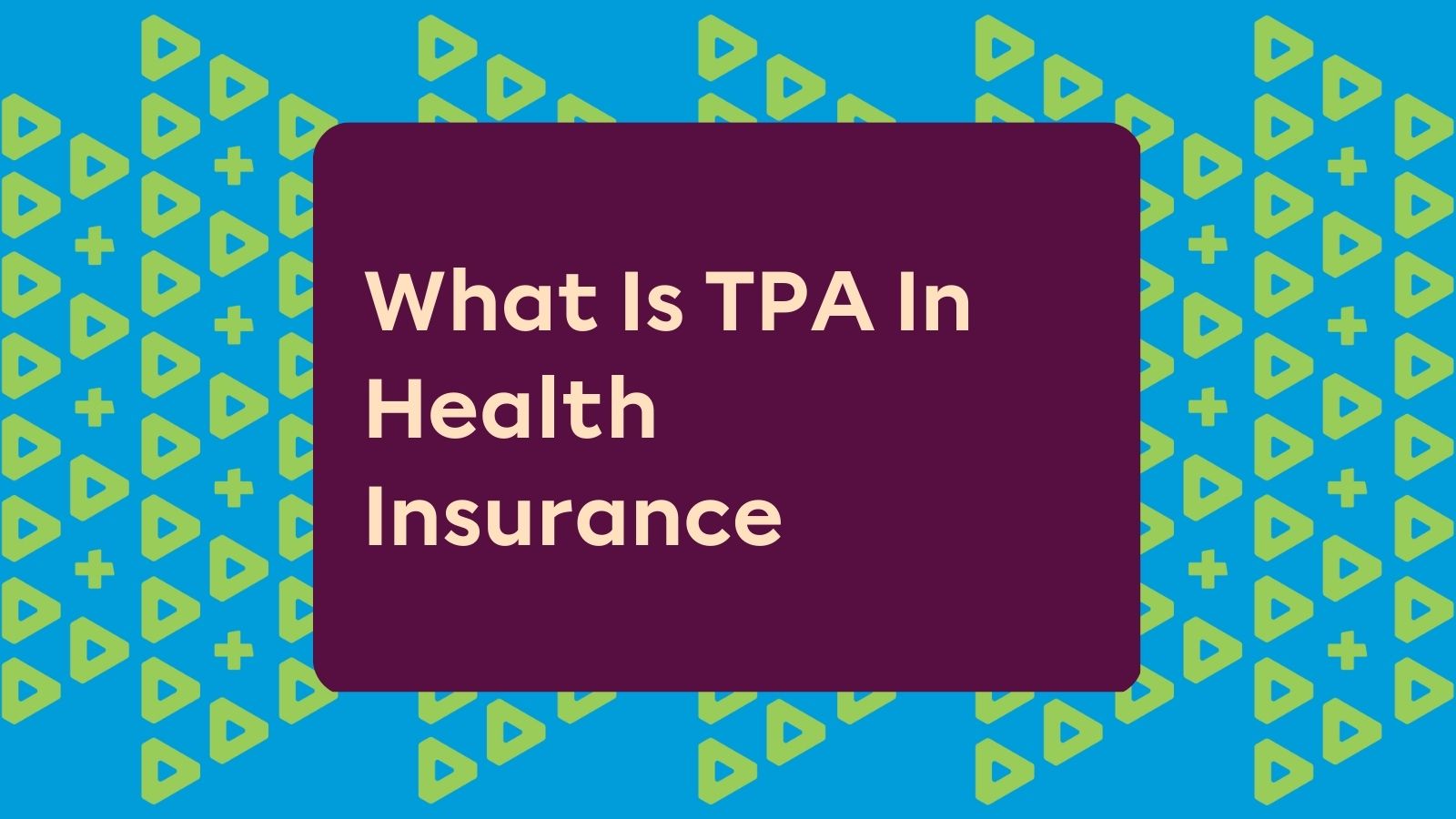

Finance
What Is A Misrepresentation On The Insurance
Published: November 28, 2023
When would a misrepresentation on the insurance lead to financial consequences? Learn about the impacts of misrepresenting information on your insurance policy and how it may affect your finances.
(Many of the links in this article redirect to a specific reviewed product. Your purchase of these products through affiliate links helps to generate commission for LiveWell, at no extra cost. Learn more)
Table of Contents
- Introduction
- Definition of Misrepresentation in Insurance
- Types of Misrepresentations
- Consequences of Misrepresentation in Insurance
- Identifying Misrepresentation in Insurance
- Common Examples of Misrepresentation in Insurance
- Legal Implications of Misrepresentation in Insurance
- Preventing Misrepresentation in Insurance
- Conclusion
Introduction
Welcome to our comprehensive guide on misrepresentation in the insurance industry. Insurance is a vital part of our lives, providing financial protection and peace of mind in times of uncertainty. However, sometimes the information provided during the insurance application process may not be entirely accurate or truthful. This is where misrepresentation comes into play.
Misrepresentation refers to the act of making false or misleading statements when applying for an insurance policy. It can involve any material information that is either deliberately misrepresented or unintentionally misrepresented due to negligence or lack of knowledge. Misrepresentation can have significant consequences, both for the insured individual and the insurance company.
In this article, we will explore the different types of misrepresentations that can occur in insurance, the consequences of such misrepresentations, how to identify them, and the potential legal implications. We will also provide some common examples to illustrate how misrepresentations can happen in real-life scenarios.
It is essential to have a clear understanding of misrepresentation in insurance to ensure that you provide accurate and truthful information when applying for a policy. Insurance companies rely on this information to assess risk, determine premiums, and make the necessary coverage decisions. Failure to disclose relevant information or intentionally providing false information can lead to coverage denials, policy cancellations, or even legal consequences.
By understanding the implications of misrepresentation, both insurance applicants and policyholders can make informed decisions and ensure a smooth and transparent insurance process. So, let’s dive deeper into the world of misrepresentation in insurance and gain valuable insights into how to navigate this critical aspect of the industry.
Definition of Misrepresentation in Insurance
Misrepresentation in the insurance industry refers to the act of providing false, inaccurate, or misleading information during the application or renewal process of an insurance policy. It can occur when an individual intentionally misrepresents facts or fails to disclose material information that could impact the insurer’s decision-making process.
Insurance companies rely on the information provided by the policyholder to assess risks and determine appropriate premiums and coverage terms. Misrepresentation can distort this process, leading to inaccurate risk assessments and potentially unfair outcomes for both the insured individual and the insurer.
There are generally two types of misrepresentation in insurance: innocent or non-fraudulent misrepresentation and fraudulent misrepresentation.
Innocent misrepresentation occurs when the insured provides false information unintentionally or without the intention to deceive. This can happen due to a lack of knowledge or misunderstanding of the information required. While innocent misrepresentation is not done with fraudulent intent, it can still have consequences for the insurance policy.
Fraudulent misrepresentation, on the other hand, involves intentionally providing false or misleading information to the insurer. This could be done to secure more favorable terms, obtain coverage that would otherwise be denied, or to fraudulently claim benefits later on. Fraudulent misrepresentation is a serious offense and can lead to severe penalties, including the denial of coverage, policy cancellation, or even legal action.
It is important to note that misrepresentation can occur not only during the initial application process but also during policy renewal or when making changes to an existing policy. Any significant changes in circumstances or additional information that could impact the policy’s terms and conditions should be accurately disclosed to the insurer.
Insurance companies rely on trust and accurate information to maintain a fair and sustainable insurance system. Misrepresentation undermines this trust and can have far-reaching consequences for both the insured individuals and the insurance industry as a whole. It is crucial to understand the definitions and implications of misrepresentation in insurance to ensure transparency and integrity in the insurance process.
Types of Misrepresentations
Misrepresentations in insurance can vary in nature and severity. Understanding the different types of misrepresentations can help policyholders and insurance companies identify and address them appropriately. Here are some common types of misrepresentations that can occur in the insurance industry:
- Material Misrepresentation: A material misrepresentation refers to the deliberate or unintentional omission or alteration of information that could significantly impact the insurer’s decision to provide coverage or the terms of that coverage. For example, failing to disclose a pre-existing medical condition when applying for health insurance would be considered a material misrepresentation.
- Concealment: Concealment occurs when an individual intentionally hides or withholds crucial information from the insurance company. This could include not disclosing a previous bankruptcy when applying for a policy that requires financial history or failing to mention previous insurance claims when renewing an existing policy.
- Overstatement: Overstatement involves exaggerating or inflating the value of an item, property, or incident when making an insurance claim. This could be done to receive a higher payout or compensation than what is rightfully owed.
- Understatement: Understatement is the opposite of overstatement, where the insured individual intentionally downplays or minimizes the value of an item, property, or incident while making an insurance claim. This could be done to reduce premiums or to deceive the insurer in order to obtain coverage that would otherwise be denied.
- False Documentation: This type of misrepresentation involves the creation or alteration of false documentation to support an insurance application or claim. It may include forged receipts, invoices, medical records, or other documents to substantiate false information or inflate a claim.
- Identity Fraud: Identity fraud occurs when an individual assumes another person’s identity or uses fraudulent information, such as a false name or social security number, to obtain insurance coverage. This type of misrepresentation is a criminal offense and can lead to severe legal consequences.
These are just a few examples of the types of misrepresentations that can occur in the insurance industry. It is crucial for both policyholders and insurance companies to be aware of these types of misrepresentations and take appropriate measures to prevent and address them. Detecting misrepresentations early can help maintain the integrity of the insurance system and ensure fair outcomes for all parties involved.
Consequences of Misrepresentation in Insurance
Misrepresentation in insurance can have significant consequences for both the insured individual and the insurance company. The impact of misrepresentation can range from denial of coverage to legal consequences, depending on the nature and severity of the misrepresentation. Here are some common consequences that can arise from misrepresentation in insurance:
- Denial of Coverage: If an insurance company discovers that a policyholder has provided false or misleading information during the application process, they may deny coverage altogether. This means that the insured individual will not receive any benefits or financial protection under the policy.
- Policy Voidance: In cases of significant misrepresentation or fraudulent misrepresentation, the insurance company may choose to void the policy retroactively. This means that the policy will be considered null and void from its inception, and any premiums paid may not be reimbursed.
- Policy Rescission: Rescission is similar to policy voidance, but it refers to the termination of the policy going forward rather than retroactively. The insurance company may choose to cancel the policy due to misrepresentation, and any future claims or coverage will be denied.
- Premium Adjustments: If a misrepresentation is discovered after a policy has been issued, the insurance company may adjust the premiums accordingly. This could result in higher premiums or adjustments to future premiums to reflect the accurate risk assessment based on the disclosed information.
- Legal Consequences: In cases of intentional or fraudulent misrepresentation, the insurance company may pursue legal action against the insured individual. This can result in civil penalties, fines, and even criminal charges, depending on the jurisdiction and severity of the misrepresentation.
- Loss of Trust and Reputation: Misrepresentation not only damages the relationship between the insured individual and the insurance company but can also have broader implications. Insurance companies rely on accurate information to assess and manage risks effectively. When misrepresentation occurs, it erodes trust within the insurance industry and can tarnish the reputation of the insured individual as well.
It is crucial to understand the potential consequences of misrepresentation in insurance. Providing accurate and truthful information during the application and claims process is not only an ethical responsibility but also essential for maintaining the integrity of the insurance system. By being transparent and honest, policyholders can ensure fair outcomes and protect their own interests as well.
Identifying Misrepresentation in Insurance
Identifying misrepresentation in insurance is crucial for insurance companies to protect themselves from fraudulent activity and for policyholders to ensure that they provide accurate and truthful information. Here are some key ways to identify misrepresentation in the insurance industry:
- Reviewing Application Forms: Insurance companies carefully review the information provided in the application forms. They will look for inconsistencies, missing information, or suspicious details that may indicate misrepresentation. It is important for applicants to double-check their application forms for accuracy and completeness to avoid potential issues.
- Verifying Supporting Documents: Insurers often request supporting documents to validate the information provided in the application. These documents can include medical records, financial statements, or documentation related to property values. By carefully examining and verifying these documents, insurers can ensure that the information aligns with the applicant’s claims.
- Comparing Information with Industry Databases: Insurance companies have access to industry databases that contain information on previous claims, policy history, and other relevant details. They can cross-reference the information provided by the applicant with the data in these databases to identify any inconsistencies or discrepancies.
- Investigating Claim Circumstances: When an insurance claim is filed, insurers may conduct investigations to determine the validity of the claim. This may involve gathering evidence, interviewing witnesses, or consulting with experts to assess the accuracy of the information provided and to uncover any signs of misrepresentation.
- Professional Review and Analysis: Insurance companies employ professionals, such as underwriters and adjusters, who have experience and expertise in assessing insurance applications and claims. These professionals can analyze the information provided and identify any red flags or inconsistencies that may indicate potential misrepresentation.
- Utilizing Technology and Data Analytics: Advancements in technology and data analytics have enabled insurers to employ sophisticated tools to detect patterns and anomalies in the information provided by applicants. The use of artificial intelligence and machine learning algorithms can help identify potential misrepresentations more efficiently.
Insurance companies have a responsibility to carefully review and assess the information provided by the applicants to ensure the accuracy and integrity of the insurance process. Similarly, policyholders should be diligent in providing accurate and truthful information to avoid any potential issues or consequences related to misrepresentation. By maintaining transparency and adhering to ethical practices, both insurance companies and policyholders can work together to protect the integrity of the insurance industry.
Common Examples of Misrepresentation in Insurance
Misrepresentation in insurance can take various forms and can occur in different insurance sectors. Understanding some common examples can help policyholders be aware of the potential pitfalls and ensure that they provide accurate and truthful information. Here are some common examples of misrepresentation in insurance:
- Health Insurance: Misrepresenting pre-existing medical conditions, not disclosing prior treatments or surgeries, or providing false information about lifestyle habits (such as smoking or alcohol consumption) when applying for health insurance coverage.
- Auto Insurance: Failing to disclose past accidents or traffic violations, misrepresenting the primary usage of a vehicle (personal vs. commercial), or providing inaccurate information about the driving history when applying for auto insurance.
- Homeowners Insurance: Understating the value of property, failing to disclose previous property damage or claims history, or misrepresenting the presence of safety features like smoke detectors or security systems when applying for homeowners insurance coverage.
- Life Insurance: Concealing the existence of other life insurance policies, misrepresenting lifestyle habits (such as risky hobbies or occupation), or providing false information on the application about health conditions or family medical history.
- Business Insurance: Failing to disclose previous liability claims or lawsuits, misrepresenting the nature of the business or the number of employees, or providing false financial information when applying for business insurance coverage.
- Travel Insurance: Not disclosing pre-existing medical conditions, misrepresenting travel plans or destinations, or providing false information about the purpose of the trip when applying for travel insurance coverage.
These examples illustrate how misrepresentation can occur in various insurance sectors. It is essential for policyholders to carefully review the application forms, understand the information required, and provide accurate and truthful information. Similarly, insurance companies employ various measures to detect misrepresentations and verify the information provided.
Misrepresentation can lead to denial of claims, policy cancellations, or even legal consequences. To ensure a fair and transparent insurance process, it is crucial for both insurance companies and policyholders to uphold the principles of integrity and honesty.
Legal Implications of Misrepresentation in Insurance
Misrepresentation in insurance can have serious legal consequences for both the insured individual and the insurance company. The legal implications of misrepresentation can vary depending on the jurisdiction and the severity of the misrepresentation. Here are some potential legal implications of misrepresentation in insurance:
- Policy Nullification: If a misrepresentation is discovered, the insurance company may choose to nullify the policy, considering it void from its inception. This means that the policyholder will lose all benefits and coverage, and any premiums paid may not be refunded.
- Policy Rescission: Rescission refers to the cancellation of the policy going forward. The insurance company may choose to rescind the policy due to misrepresentation, denying any future claims or coverage. The insured individual will no longer have insurance protection under the rescinded policy.
- Denial of Claims: If misrepresentation is discovered after a claim is filed, the insurance company may deny the claim altogether. This means that the insured individual will not receive any benefits or compensation for the claimed loss or damage.
- Civil Penalties: In some cases, insurance companies may pursue civil penalties against individuals who have engaged in misrepresentation. These penalties can include fines, repayment of previous claims, or forfeiture of any monetary gain obtained through misrepresentation.
- Criminal Charges: In cases of intentional or fraudulent misrepresentation, criminal charges can be filed against the individuals involved. This can result in fines, imprisonment, or other criminal penalties, depending on the jurisdiction and severity of the misrepresentation.
- Loss of Professional Licenses: If professionals, such as insurance agents or brokers, are found to have engaged in misrepresentation, they may face disciplinary action that could result in the loss of their professional licenses. This can severely impact their ability to work in the insurance industry.
It is important to note that the legal implications of misrepresentation can vary depending on the specific circumstances and the laws of the jurisdiction. Misrepresentation is taken very seriously by insurance companies and regulatory authorities, and they have measures in place to investigate and address any instances of misrepresentation promptly.
Insurance applicants and policyholders should be aware of the legal implications of misrepresentation and understand the potential consequences of providing false or misleading information. By being transparent and truthful throughout the insurance process, individuals can avoid legal issues and ensure a fair and ethical insurance experience.
Preventing Misrepresentation in Insurance
Preventing misrepresentation in insurance is crucial for both insurance companies and policyholders to maintain the integrity of the insurance system. By following these preventive measures, individuals can ensure that they provide accurate and truthful information during the insurance application and claims process:
- Read and Understand Application Forms: Carefully read and understand all questions and information required in the application forms. If you have any doubts or concerns, seek clarification from the insurance company or a professional advisor before providing the information.
- Fill out Application Forms Accurately: Provide complete and accurate information in the application forms. Take the time to review and verify the details provided to ensure their accuracy. Double-check information related to personal details, medical history, property values, and any other relevant factors.
- Disclose Material Information: Disclose all material facts and information relevant to the insurance application. This includes pre-existing medical conditions, previous insurance claims, prior convictions or legal issues, and any other information that may impact the insurer’s decision-making process.
- Keep Records and Documentation: Maintain records and documentation related to the insurance application and policy. This may include medical records, financial statements, property appraisals, or any other supporting documents that may be required. These records serve as evidence of the accuracy and transparency of the information provided.
- Review and Update Policy Information: Regularly review your insurance policies to ensure that the information is up to date and accurately reflects your current circumstances. If there are any changes in your situation, such as a new medical condition or change in property value, promptly notify your insurance company to adjust the policy terms accordingly.
- Consult with Professionals: When in doubt, seek advice from insurance agents, brokers, or other professionals. They can provide guidance and ensure that you understand the insurance requirements and the information needed for accurate disclosure.
- Be Honest and Transparent: Maintain honesty and transparency throughout the insurance process. Avoid providing false or misleading information, as the consequences can be severe. It is better to disclose all relevant information upfront, even if it may lead to higher premiums or other modifications to the policy terms.
By following these preventive measures, individuals can help prevent misrepresentation in insurance. Insurance companies also play a crucial role in verifying and cross-checking the information provided by applicants to ensure accuracy and integrity. Together, these efforts contribute to a fair and transparent insurance system that benefits both insurance companies and policyholders.
Conclusion
Misrepresentation in insurance poses significant risks and consequences for both policyholders and insurance companies. Understanding the definition, types, and potential legal implications of misrepresentation is essential to maintain transparency and integrity within the insurance industry.
Policyholders should be diligent in providing accurate and truthful information during the insurance application and claims process. This includes disclosing material facts and being transparent about any relevant information that could impact the insurer’s decision-making process. By doing so, policyholders can avoid denial of coverage, policy cancellations, or legal consequences.
Insurance companies play a crucial role in preventing misrepresentation by carefully reviewing application forms, verifying supporting documents, and employing professionals to analyze and identify potential misrepresentations. By implementing technology and data analytics, insurers can enhance their ability to detect patterns and anomalies that may indicate misrepresentation.
To maintain the integrity of the insurance system, it is essential for both insurance companies and policyholders to prioritize honesty, transparency, and ethical practices. Effective communication, proper documentation, and regular policy reviews can help prevent misrepresentation and ensure a fair and transparent insurance experience for all parties involved.
Remember, misrepresentation not only jeopardizes insurance coverage but also undermines trust and reputation within the insurance industry. By promoting a culture of honesty and accuracy, we can ensure a sustainable and trustworthy insurance system that benefits everyone.














